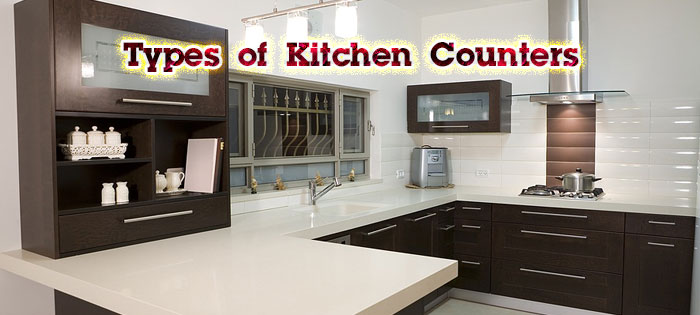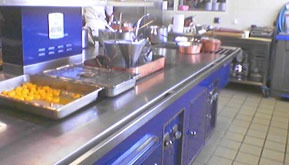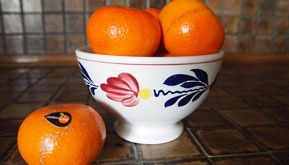What would a proper kitchen be without kitchen counters? We place everything on them, ranging from the newly bought grocery items to small appliances like the blender and the coffee maker. It’s the kitchen counters or countertops where most of “action” occurs — we wash, slice, mix and blend ingredients as well as do other sorts of things like kneading dough.
So, in other words, counters are essential to every kitchen. And for every discerning homeowner, they should not only be functional. They should also be durable. And it won’t hurt if they look good too — the colors and the surface patterns of the kitchen counter will also make a great impact to the whole space.
Updating your kitchen with counters is one of the most expensive home remodeling splurges. So it’s best to refer to kitchen gadget reviews or any other home improvement websites and reading materials to find out which kitchen counters will complement (or otherwise clash with) your kitchen. Check out the best places along the way to get kitchen gadget deals.
Here are the following types of materials commonly used for kitchen counters:
 1. Granite
1. Granite
Granite is a common type of rock which is used for many things such as kitchen counters. As its commercial use has become widespread, granite comes cheap compared to other kitchen countertop materials, but it still gives an elegant look to any type of kitchen — from basic and modest to sleek and modern. Since granite is a natural rock, it has variations in its patterns which are a common feature — and these only add to its beauty. Granite doesn’t just look good, it is also durable. However, kitchen counters made of natural granite may require more cleaning and maintenance than engineered granite or any other manufactured stone. It also requires regular sealing.
 2. Quartz
2. Quartz
Engineered quartz is another popular choice for kitchen counters. Not only it is renowned for its aesthetic value, but also for its durability. Since quartz is a non-porous material, it has a better resistance to staining and won’t crack or chip easily compared to natural granite. Plus, quartz also doesn’t need to be sealed.
Manufactured quartz comes in a variety of colors and patterns that you’ll find in natural stones like granite and marble. Finished quartz will give off an elegant, even rich and luxurious, appearance.
 3. Wood
3. Wood
If you like the warm look of a cottage kitchen, a butcher block wood countertop is your best bet. Wood is one of the traditional kitchen countertops, but over the years it has fallen in popularity due to the emergence of other materials like granite and quartz. Plus, people have this wrong notion that wood countertops (as well as wood chopping boards) harbor more bacteria than other materials. But it’s actually the opposite — recent research and studies show that wood countertops and chopping boards contain less salmonella bacteria than, say, their plastic counterparts. According to those studies, the bacteria would sink down below the wood’s surface and die off within minutes after exposure. So yes, wood countertops are safer and more sanitary to do food prep, even when chopping and preparing meats and fish.
Sealed wood countertops offer a beautiful warm look to most kitchens. Since it is known for its aesthetic appeal (apart from its functionality), wood countertops are known to be of high-maintenance. They can be damaged over time by water, stains and scratches so it must be cleaned, sealed and oiled regularly.
4. Marble
Natural marble offers a beautiful and luxurious appearance, if quite expensive. It is durable, and highly resistant to moisture and heat. But there are drawbacks too: aside from its high price tag, marble can also be easily stained since it is a porous mineral, thus it should need regular sealing.
5. Laminate countertops
For the budget-conscious homeowners, laminate countertops will be the answer. They now enjoy a newfound popularity because they mimic the appearance of granite, marble or wood, with a fraction of a cost of the real thing. Laminate countertops are available in many colors and designs to choose from, plus it can be installed or replaced even by DIY hobbyists.
If you are concerned about the level of maintenance of laminate countertops, they’re made from synthetic materials coated with plastic. Thus, they provide a surface to your countertop that’s durable and easy to clean. However, you have to be extra careful when preparing food on this type of material, because laminates are susceptible to chipping and scratching.
6. Concrete
One of the main advantages of choosing concrete kitchen counters is its high customization — it can be made into any shape and comes with many stains and colors that homeowners can choose from. Plus, concrete can be mixed with other materials (such as tiles) to create a unique look.
Concrete is also energy-efficient, as it absorbs heat when the room temperature goes up, only to release the collected heat when everything cools down.
But just when you think that concrete is the perfect choice, it also has its disadvantages. It is porous and thus it needs proper and regular sealing. It is also prone to cracking and chipping, and it also doesn’t come cheap.
7. Soapstone
Soapstone usually has a dark gray color and feels smooth to the touch. It is generally stain- and bacteria-resistant, but it can possibly crack and therefore requires regular sealing, oiling and other kinds of maintenance.
 8. Stainless steel
8. Stainless steel
Stainless steel kitchen counters look perfect especially in an industrial or contemporary kitchen. Since it is a good conductor of heat, stainless steel kitchen counters take hot pans and pots quite well. It is also easy to clean. However, stainless steel kitchen counters are also one of the more expensive options. Plus, it can be noisy and is prone to slipping thus it can’t be used as a surface for cutting.
 9. Ceramic tile
9. Ceramic tile
Ceramic tiles are also a popular sight not just in the bathroom but also in the kitchen. But it doesn’t have to be always white, as ceramic tiles also come in different colors, textures and designs. Ceramic tiles are also inexpensive and economical since they can be purchased and installed by sections at a time.
Ceramic tiles are durable and heat- and water-resistant. However, they are also known to chip and crack easily. The crevices between the tiles can accumulate dirt, oil and grime, so they should be regularly cleaned and bleached.
If your house boasts the best kitchen gadgets and installations possible, they only deserve the best kitchen counters.


 1. Granite
1. Granite 2. Quartz
2. Quartz 3. Wood
3. Wood 8. Stainless steel
8. Stainless steel 9. Ceramic tile
9. Ceramic tile